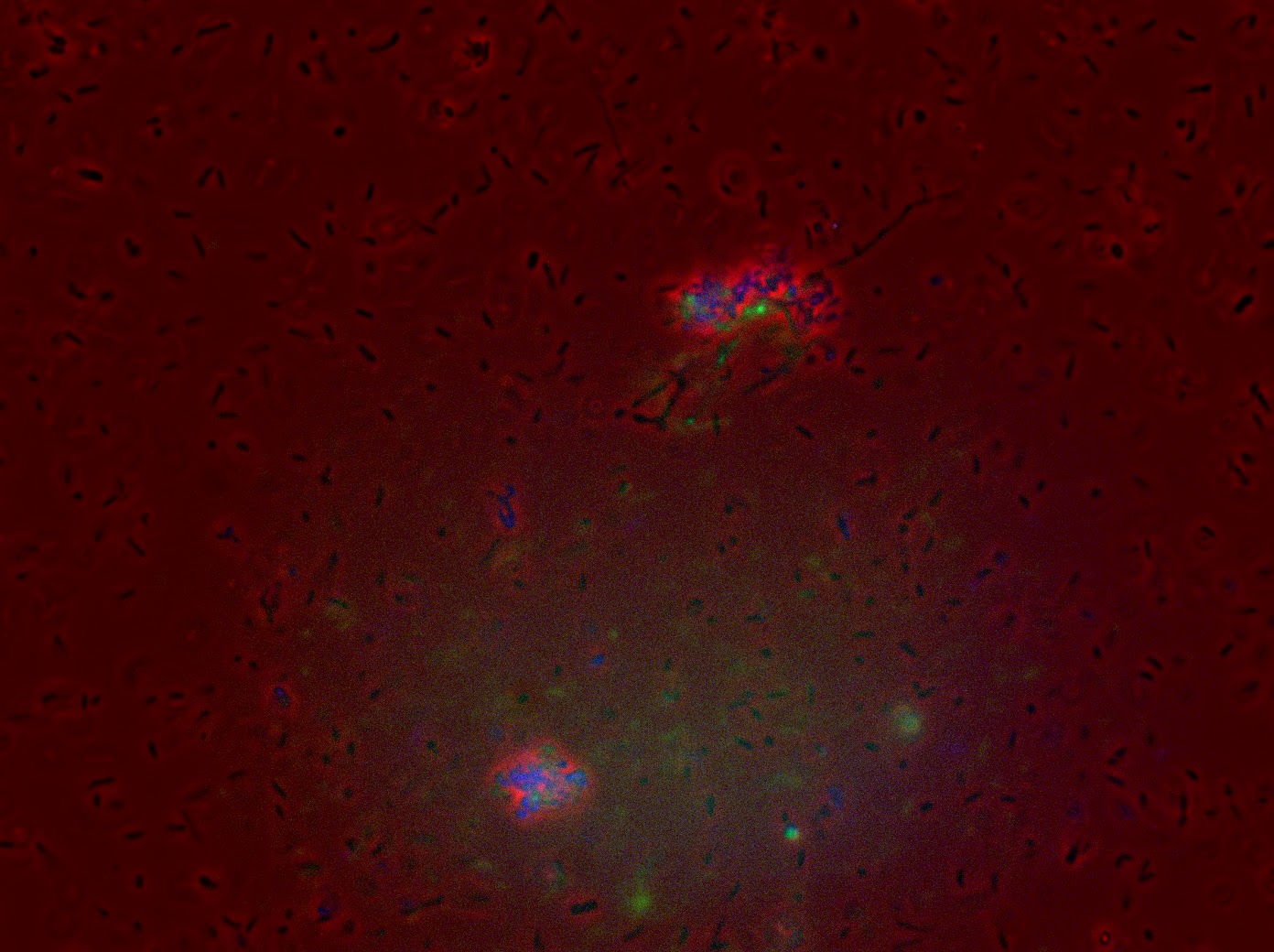What is quorum sensing ?
Quorum sensing (QS) is a communication system used by bacteria to communicate between each other in an environment. Bacteria produce specific molecules called autoinducers and release them in the environment to communicate with the other cells in the same environment.
This communication happens when the cell density high enough. In this case the autoinducers bind to specific receptors of the bacterial cells and induce the transcription of genes involved in pathogenicity, bioluminescence, biofilm formation and antibiotic production for example.
Scientist are working on quorum sensing to replace the traditional antibiotic treatment of bacterial infection. By targeting the communication between bacteria instead of killing them,we might be able to overcome bacterial resistence.
What did we do ?
We learned that some spices we use in our day to day life are effective in ihibiting quorum sensing in some bacteria. Following this, we wanted to know if the these spices had any effect on the bacteria we had in the lab. Basically we wanted to study the effect of basil, cinnamon and ginger on the quorum sensing activity of
Bacillus megaterium, Escherichia coli, Pseudomonas fluorescens,Vibrio fischeri and
Bacillus subtilis. Each bacteria has its own way of quorum sensing. For example, in
E.coli the QS is detected by bioluminescence, biofilm formation and swarming. In bacteria like the
V.fischeri the QS activity is bioluminescence.
Our project was to study the effect the different essential oils had on the QS activity.
In this post I'm going to focus on how the QS activity of
V.fischeri was affected and how we studied and analyzed the fluorescence of these cells.
How did we grow the bacteria ?
The experimental setup was the following: the
V.fischeri was put in 96-well plate along the other bacteria that we studied. The concentration of essential ils varied from 1% to 0.1% mixed in the media. The samples from the each well was observed on fluorescence microscope using different filters (GFP and DAPI).
 |
Figure 1: V.fischeri seen under fluorescent microscope with the combination of DAPI (blue) and GFP (green) filters
|
How was the fluorescence studied ?
We calculated the Corrected Total Cell Fluorescence (CTCF) using Image J for each sample: Photobacterium medium and ginger essential oil at 1%, photobacterium medium and cinnamon essential oil at 1% and finally the control which was only the photobacterium medium.
In order to calculate the CTCF using Image J, we followed the following steps:
- We selected the first cell we wanted the CTFC from. The using any drawing tool from Image J.
- Then in the Analyze menu, we clicked on "set measurements" where we selected AREA, INTEGRATED DENSITY and MEAN GRAY VALUE.
- We clicked on "Measure" from the analyze menu and a window will show up with the different values we asked for the first cell selected using the drawing tool.
- Then we repeated this step for ten cells selected "randomly" (the most random possible)
- In order to take out any background noise, we selected a region from the background without any cells and obtained the same values. This was done 5 times.
- Then we selected all the data and pasted it on an excel sheet.
- The CTCF was calculated using this formula:
CTCF= Integrated density-(Area ×Mean grey value)
The mean CTCF was used for the graph which follows.

The results suggest that when the bacteria grew in a medium with ginger or cinnamon essential the GFP fluorescence (green) decreased drastically compared to the control. The DAPI is also quiet low but doesn't show a high decrease as GFP.
We can conclude little, as no statistical tests were done. However we can see a important impact on these cells when they grew on media with essential oils. Further tests need to be done in order to conclude. But this project can be used as a starting point for further research on this.
For information, check out:
Our google drive:
https://drive.google.com/open?id=0B8RC6xPQ6yh_dkFpS0lJMllrV2s











